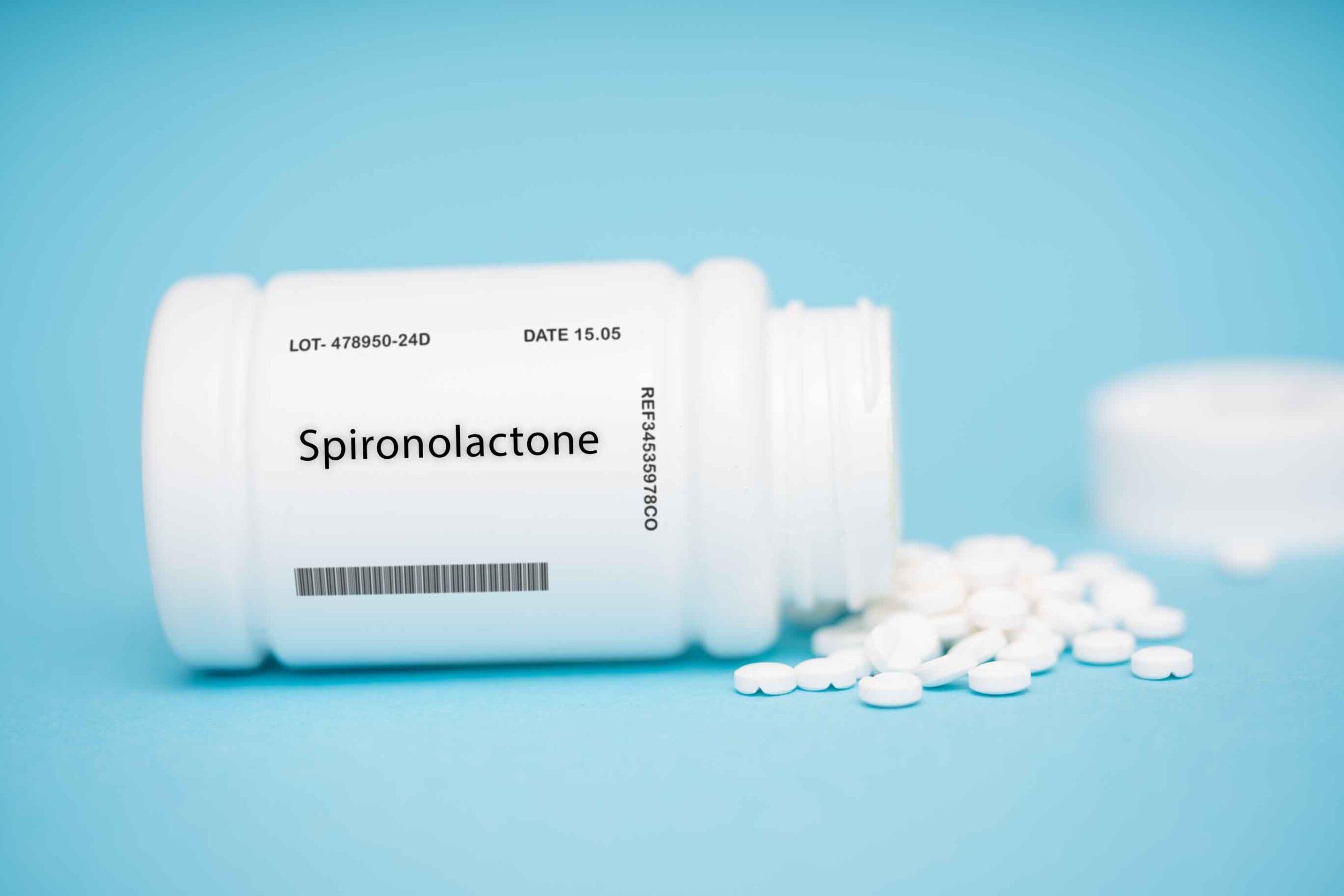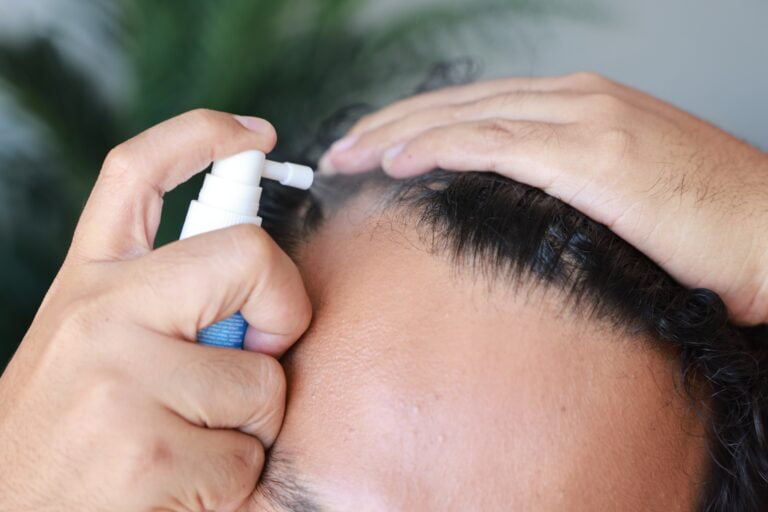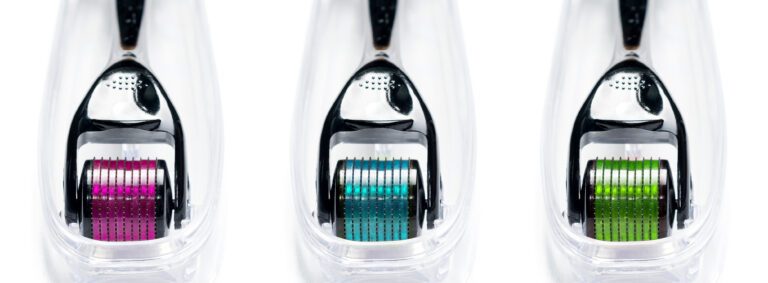Can You Use Spironolactone to Treat Hair Loss?
If you’re suffering from hair loss or patterned baldness, you’ve probably already heard of minoxidil and finasteride. These are effective treatments that have shown excellent results in treating conditions like androgenetic alopecia.
However, there’s still one product you may not know about but might be just as effective: Spironolactone. But how does spironolactone treat hair loss?
What Is Spironolactone?
Spironolactone is an oral FDA-approved medicine that’s usually used to treat heart failure, high blood pressure, and liver disease.
It helps your kidneys get rid of the excess water and sodium in your body without losing too much potassium.
We know what you’re thinking: what does this have to do with treating hair loss?
Well, There’s a topical variant of this medicine that you can apply to your skin and scalp.
Like many other medications, researchers have done several studies to understand what spironolactone can offer its users.
Over time, they noticed those who used it exhibited signs of hair growth. That wasn’t the original intention behind the drug, so it was a happy little accident, as Bob Ross would call it.
The results prompted researchers to start studying its effects on androgenetic alopecia (AGA), which is what we’ll cover in the following sections.
How Does Spironolactone Treat Hair Loss?
Let’s see what that treatment has to offer to people experiencing hair loss.
Blocks Dihydrotestosterone (DHT)
You probably already heard of dihydrotestosterone (DHT), but did you know it can cause hair loss in males and females?
That hormone can prompt the androgen receptors on your follicles to shorten the hair growth cycle, producing shorter, weaker, and thinner strands.
Here’s a not-so-fun fact: Testosterone can also activate these androgen receptors, but DHT does it five times more efficiently.
Well, that’s where spironolactone can help; It acts as an anti-androgen that suppresses the production of DHT. So you won’t have to worry about losing your hair anymore.
A 2007 study examined the effects of spironolactone on 80 women with female pattern hair loss. The results were impressive; 88% of them stopped losing hair during the trial.
Another 2015 study entertained the same premise. Researchers noticed that 74.3% of the subjects experienced less hair loss after the treatment.
Promotes Healthy Hair Growth
Yes, spironolactone doesn’t just prevent hair loss. It also promotes healthy hair growth, so you get the best of both worlds.
A recent study explored the effectiveness of spironolactone in treating androgenetic alopecia. Besides reducing hair loss, researchers concluded that the oral and topical versions can promote hair growth.
Enhances Other Hair Loss Treatments
We understand you might still be a bit skeptical about spironolactone’s effectiveness. Maybe you’ve never heard of it before.
Well, you can always use another hair loss treatment to ensure optimal results. For example, spironolactone and minoxidil can work well together.
Drug interaction doesn’t always produce ideal results. Sometimes, it can even be dangerous—not with these two, though.
A 2020 study split 60 patients into three groups: The first one applied topical minoxidil gel 5%. The second one used topical spironolactone 1%. The third combined both treatments.
Can you guess which group had the best response to the treatment? Yes, the third one!
The mixed treatment elongated the anagen stage and shortened the telogen stage for all the members of that group.
The anagen stage is the first phase of the hair growth cycle. It’s where the follicles start growing strands, pushing them out until they separate.
The telogen stage is the shedding phase, where you start losing hair. In other words, the spironolactone-minoxidil treatment reduces hair loss and enhances hair growth.
What’s the Difference Between Oral and Topical Spironolactone?
So far, we’ve covered the effects of topical spironolactone exclusively, but there’s also an oral version. Let’s see what the differences between them are:
1. The Intake Method
It doesn’t take Sherlock Holmes to deduce that the primary difference between oral and topical spironolactone is how you absorb it.
While that seems like a slight difference, it’s actually more influential than you think. Taking spironolactone orally means its effect covers the entire body.
It can regulate hormonal imbalances that impact hair follicles on a larger scale. Topical spironolactone, on the other hand, is applied directly on the scalp.
Its effect will be more concentrated in the area of application, so you won’t get the same large-scale coverage.
2. Hair Loss Treatment Efficacy
Both variants seem to offer excellent results. However, oral spironolactone might be more effective in treating hair loss that’s caused by hormonal imbalances.
After all, it adjusts the hormonal imbalances throughout the entire body, addressing the root cause of the issue.
While the topical variant’s effect is more concentrated on the scalp, it doesn’t offer the same results as the oral.
3. Potential Side Effects
Yes, oral spironolactone offers comprehensive coverage, but that doesn’t come without risks. It can prompt serious side effects, like dehydration, muscle weakness, and electrolyte imbalances.
It’s also not safe for pregnant women, as its anti-androgenic properties can interfere with the development of the fetus.
Topical spironolactone’s side effects, on the other hand, aren’t as extreme, as it doesn’t enter the bloodstream.
It doesn’t prompt anything unusual for a topical hair treatment—it may cause itching, swelling, redness, burning, or scaling. Ultimately, it’s the safer option.
4. Ease of Commitment
This criterion is subjective. It’s easy to commit to taking an oral dose of spironolactone on a daily basis. The problem isn’t within the intake. It’s the need for ongoing monitoring.
Since the oral treatment can prompt severe side effects, patients are required to do regular checkups to ensure everything is fine.
It doesn’t sound like a big deal, but it can be inconvenient in the long run and has driven people away from oral spironolactone before.
Topical spironolactone requires constant application on the scalp, which isn’t as simple as taking an oral dose. However, it’s not as dangerous as the oral variant, so it doesn’t require constant monitoring.
If the application method isn’t too bothersome for you, the topical spironolactone might be easier to commit to.
Is Topical Spironolactone Safe for Men?
Now, you understand that spironolactone can suppress the production of androgens, which are crucial hormones for males.
Does that mean topical spironolactone isn’t safe for men? Some have hypothesized that it can reduce the sexual drive in men and cause other hormonal issues. That’s not necessarily true, though.
Yes, spironolactone reduces the testosterone and DHT levels in your body. However, as we’ve already established, the topical variant doesn’t interfere with the hormonal balance in the body.
Such an effect is exclusive to oral spironolactone, so the topical variant should be safe.
How to Apply Topical Spironolactone?
You can’t enjoy spironolactone’s promising results if you don’t apply it properly. The first thing you should know is the quantity of each dose and the frequency of application.
That’s usually for your doctor to answer, as it might differ from one patient to another.
Besides, topical spironolactone comes in the form of liquid, gel, or cream. So, it depends on the version you’ll use. That said, you’ll probably apply it twice a day, as that’s the standard frequency.
You can apply liquid/gel spironolactone through a dropper. Try not to apply it on your hair. Instead, stick to the balding areas as much as possible.
If you want to use spironolactone and minoxidil, don’t combine them in the same bottle. Apply them separately.
Applying spironolactone cream isn’t that different from any other cream. Take a pea-sized amount with your fingertips and gently rub it on your scalp until it fully absorbs it.
How Does Topical Spironolactone Compare to Finasteride?
Topical finasteride is another hair loss treatment that has made quite a fuss since its inception.
Several studies have claimed it can effectively reduce hair loss and promote hair growth. It sounds like a steal, so can spironolactone compete? Well, you don’t have to wonder for long.
A 2020 study answered that very question. Researchers split 32 participants into two groups: The first one used finasteride, while the other used spironolactone.
Both treatments did an excellent job; after six months, the subjects of both groups exhibited signs of hair growth and reduction of androgenetic alopecia.
However, it seems that spironolactone showed more promising results, especially in females.
How Long Do You Have to Wait Before You See Results?
There isn’t a definitive answer to that question, as it differs from one person to another. However, you shouldn’t expect to see any results before at least three months.
After 6-9 months, you should have a clear idea of how well the treatment is working. If you don’t notice clear improvements, don’t jump to conclusions.
Pay your doctor a visit before deciding to quit that medication. They might see something you don’t.
Wrapping Up
Now you know how effective topical spironolactone is in treating hair loss. All the studies indicate that the treatment provides promising results, reducing hair loss and promoting growth.
Of course, it doesn’t come without risks, but these risks aren’t that extreme, so you should be fine.







